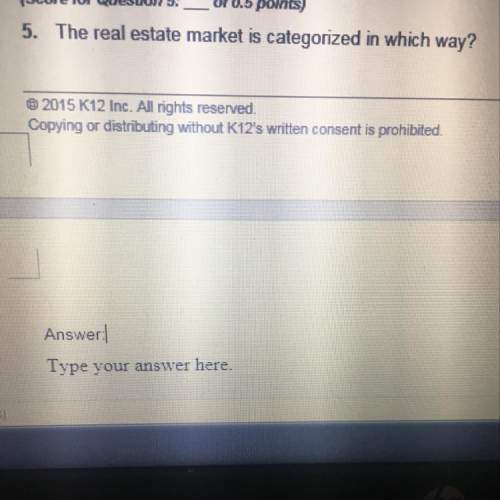
Business, 06.06.2020 22:01 Masielovebug
The percent of the investee's outstanding stock purchased by the investor determines all of the following except a. the number of shares of stock that the investee can issue. b. the accounting method used to record the stock investment. c. the degree of control that the investor has over the investee. d. All of these choices are correct.

Answers: 2


Another question on Business

Business, 21.06.2019 21:00
The management of a private investment club has a fund of $250,000 earmarked for investment in stocks. to arrive at an acceptable overall level of risk, the stocks that management is considering have been classified into three categories: high risk (x), medium risk (y), and low risk (z). management estimates that high risk stocks will have a rate of return of 15%/year; medium risk stocks, 10%/year; and low risk stocks, 6%/year. the amount of money invested in low risk stocks is to be twice the sum of the amount invested in stocks of the other two categories. if the investment goal is to have a rate of return of 9% on the total investment, determine how much the club should invest in each type of stock. (assume that all the money available for investment is invested.)
Answers: 3

Business, 22.06.2019 21:20
White truffles are a very prized and rare edible fungus that grow naturally in the countryside near alba, italy. suppose that it costs $200 per day to search for white truffles. on an average day, the total number of white truffles (t) found in alba is t = 20x − x 2 , where x is the number of people searching for white truffles on that day. white truffles can be sold for $100 each. if there is no regulation, how many more people will be searching for white truffles than the socially optimal number?
Answers: 1

Business, 22.06.2019 21:40
Which of the following is one of the main causes of inflation? a. wages drop so workers have to spend a higher percentage of income on necessities. b. demand drops and forces producers to charge more to meet their costs. c. rising unemployment cuts into national income. d. consumers demand goods faster than they can be supplied.
Answers: 3

Business, 22.06.2019 22:20
Who owns a renter-occupied apartment? a. the government b. a landlord c. the resident d. a cooperative
Answers: 1
You know the right answer?
The percent of the investee's outstanding stock purchased by the investor determines all of the foll...
Questions

Social Studies, 20.01.2021 01:10

Mathematics, 20.01.2021 01:10


Mathematics, 20.01.2021 01:10

Mathematics, 20.01.2021 01:10

Mathematics, 20.01.2021 01:10



Mathematics, 20.01.2021 01:10

Mathematics, 20.01.2021 01:10

Mathematics, 20.01.2021 01:10

Mathematics, 20.01.2021 01:10

Mathematics, 20.01.2021 01:10










